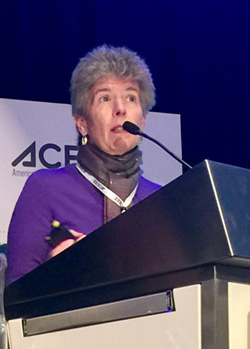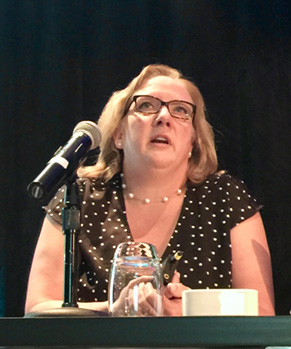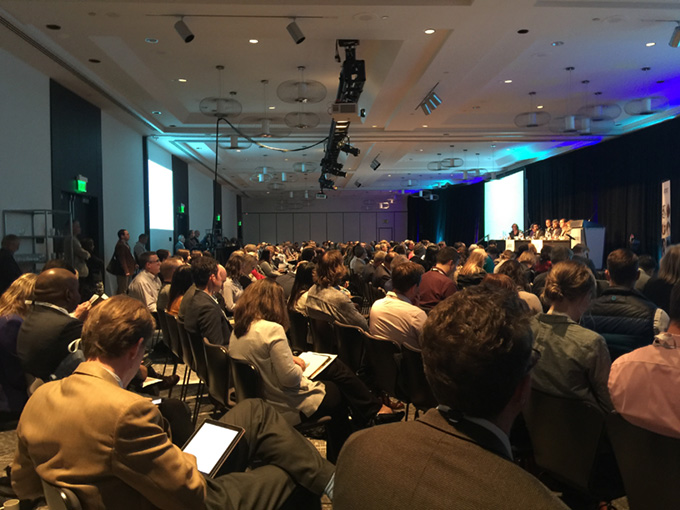As federal standards for lighting improve, many utilities and program administrators are looking at their energy efficiency portfolios and wondering “what’s next”? At our recent Energy Efficiency as a Resource conference in Minneapolis, we put that question to leaders from each of the regional energy efficiency organizations or REEOs.
Their answers show the diverse and exciting opportunities to use energy efficiency as a tool to meet the climate challenge. We share some of the themes across technology, policy, and partnerships that emerged and that highlight opportunities to expand efficiency.
Stacey Paradis, Midwest Energy Efficiency Alliance; Sue Coakley, Northeast Energy Efficiency Partnerships; Cyrus Bhedwar, Southeast Energy Efficiency Alliance; Todd McAlister, South-Central Partnership for Energy Efficiency as a Resource; Justin Brant, Southwest Energy Efficiency Project; Greg Wikler, California Efficiency + Demand Management Council; Susan Stratton, Northwest Energy Efficiency Alliance; Rachel Gold, American Council for an Energy-Efficient Economy.
Heat pumps for space and water heating
Many of the REEOs cited the residential opportunity for high-efficiency heat pumps for space and water heating when cost-effective and powered by clean electricity. Northwest Energy Efficiency Alliance’s executive director Susan Stratton noted the Northwest’s leadership on heat pump water heaters; the region represents only 4% of the total US market for water heating, but 19% of the national heat pump water heater market. We also heard about the opportunity for space heating with heat pumps in multiple regions, especially in new construction and oil and propane conversions. A subsequent panel discussed how to advance the market for efficient fuel switching.
Strategic energy management and industrial energy efficiency
Promising opportunities also extend to the industrial and commercial sectors. Several REEOs highlighted the potential for strategic energy management (SEM), programs that give organizations a structure and methodology to identify and implement projects and maintain practices that save energy. Some REEOs, including the Northeast Energy Efficiency Partnerships, are supporting regional collaboratives to drive local adoption of SEM programs. Opportunities for savings in the industrial sector go beyond SEM, although Greg Wikler from the California Efficiency + Demand Management Council noted that potential studies often overlook industrial programs. He said we need to better understand and serve industrial customers.
Targeting low- and moderate-income communities
The REEO leaders all noted the importance of delivering programs that serve all customers, regardless of income or location. They cited the particular value of targeting programs to customers with the highest energy burdens, often in rural areas or underserved communities of color. Low-income program offerings are growing in some parts of the Southeast. For example, the Tennessee Valley Authority plans to increase its support for low-income programs offered through local distribution companies. Some states are setting or increasing dedicated efficiency targets to make sure that low-income customers are served; for example, the 2018 New Efficiency New York goals require that the state target at least 20% of its investment in energy efficiency to low- and middle-income customers.
Flexibility, integration, and optimization in energy efficiency offerings
Regional leaders highlighted the need to take energy efficiency to the next level and begin to integrate programs with demand response and other distributed energy resources, enabling the same program to deliver customer and grid benefits. In the Southwest, utilities are looking to increase the savings from existing programs with networked and controlled HVAC and lighting.
Our research shows that most utilities have room to better integrate these offerings, with only five of the top 52 electric utilities by sales currently delivering fully integrated programs. One barrier is conflicting goals and siloes among programs. Sue Coakley of the Northeast Energy Efficiency Partnerships said NEEP is working to address this challenge by moving toward next-generation energy efficiency resource standards and performance incentives that encourage energy optimization. In contrast, Todd McAlister of the South-Central Partnership for Energy Efficiency as a Resource discussed the importance of making sure that efforts in Texas and Oklahoma focus on energy efficiency, not just load management and demand response.
New tools for market transformation
Utility programs are not the only tools to deliver energy efficiency savings, and many of the REEOs highlighted the recent market transformation efforts of cities, states, and regions. Stacey Paradis of the Midwest Energy Efficiency Alliance cited innovative ways to save energy over time, with lifetime goals in Illinois, incentives in Michigan, and efforts to establish cross-region partnerships on market transformation.
With mostly incremental improvements in model building energy codes at International Code Council and ASHRAE over the past six years, leading cities like San Jose are adopting “reach” or “stretch” codes that accelerate local efforts. In Washington DC, New York City, and Washington State, legislatures and city councils are building on benchmarking efforts with a new policy tool to scale savings: building performance standards. These standards set minimum whole-building energy performance targets based on building type and occupancy, requiring changes to the existing building stock.
Of course, utilities can help to support these efforts by encouraging code compliance, providing data and connections to programs for building performance standards. In many places, that will require coordination with governments and support from forward-thinking regulators.
Looking forward
The specific opportunities for energy savings beyond lighting may vary by region, but each REEO leader noted the potential for strong energy efficiency achievement even as lighting falls away as the primary foundation of many efficiency portfolios. We’re encouraged to see regional energy efficiency leaders step up with new program strategies.







